NAP SEO: What It Is & Why It Matters for Local SEO
Gabriela Jhean
NAP, or Name, Address, and Phone number, is a fundamental component of local SEO.
But how important is it really for your business’s online success?
Let’s dive into NAP SEO and uncover how it influences local search rankings and customer trust.
Table of Contents
What Is NAP SEO?
NAP is an acronym for Name, Address, and Phone number.
You may also see it referred to as NAP+W, which includes the above elements plus Website.
NAP combines fundamental pieces of information that form your business’s online identity.
In the context of organic search, NAP SEO refers to optimizing this information for consistency and accuracy across the Internet.
Why Does NAP Matter for Local SEO?
NAP is the cornerstone of a strong local SEO strategy. Search engines use it to verify a business’s legitimacy and location, which can ultimately affect your rankings.
Here are a few key points about NAP SEO:
- Consistency is key. When your NAP information is identical across all online platforms, it reinforces your business’s credibility to search engines. This consistency helps search algorithms understand that you are a real, local business and not a spammy website. As a result, your business is more likely to appear in local search results when potential customers search for your products or services.
- Accuracy is essential. Imagine calling a business’s phone number only to reach a dial tone and a recording of “this number is no longer in service.” You’d probably reach out to the next competitor on the list. Inaccurate NAP information can lead to a frustrating user experience and lost opportunities. Search engines also prioritize accurate information, as it indicates a reliable and trustworthy business.
- NAP can influence rankings. Search engines want to provide users with the most relevant and accurate information. When you provide them with accurate, up-to-date information, it’s easier for them to match your business to search queries. Consistent NAP data can ultimately help you rank higher in local search results, leading to more visibility and customers.
What Are NAP Citations?
NAP citations, or local citations, are online mentions of your business’s name, address, and phone number. These mentions can appear in various places across the web and can be categorized into two main types: owned and external.
Owned Citations
These are citations you create and manage directly. Examples include:
- Your business website
- Google Business Profile (formerly Google My Business)
- Google Maps (through Google Business Profile)
- Certain online directories (Yelp, Yellow Pages)
- Social media profiles (Facebook, LinkedIn)
- Local Chamber of Commerce listings
- Industry-specific directories where you have a direct listing
Let’s see a few examples of these citations using a popular sushi restaurant in NYC.
Here we have Blue Ribbon’s Tripadvisor page and NAP data:
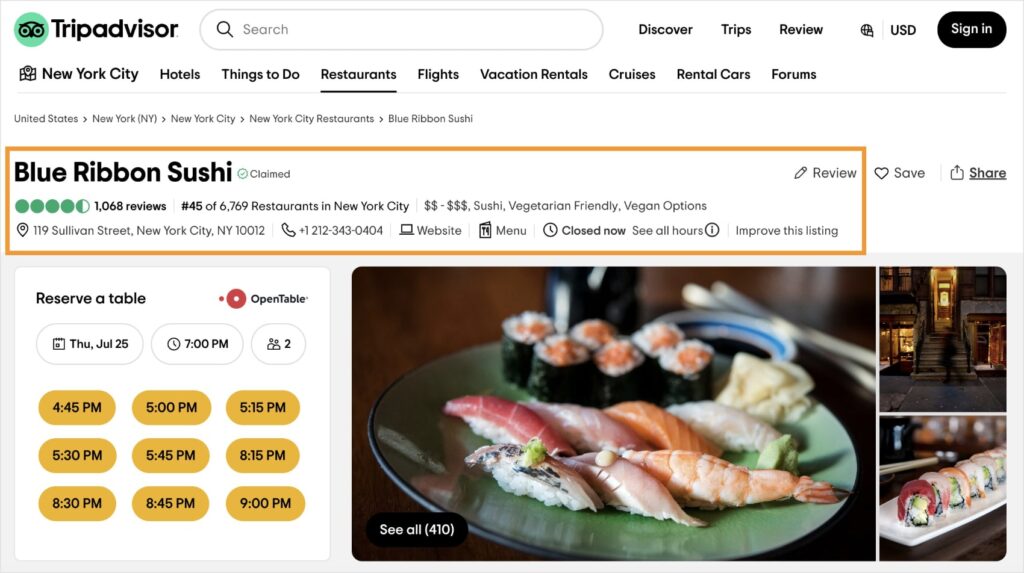
If we do a Google Search for this restaurant, we’ll notice that the NAP details are identical to Tripadvisor.
We see the Google Business Page (GBP) to the right and another review site (Yelp) in search results.
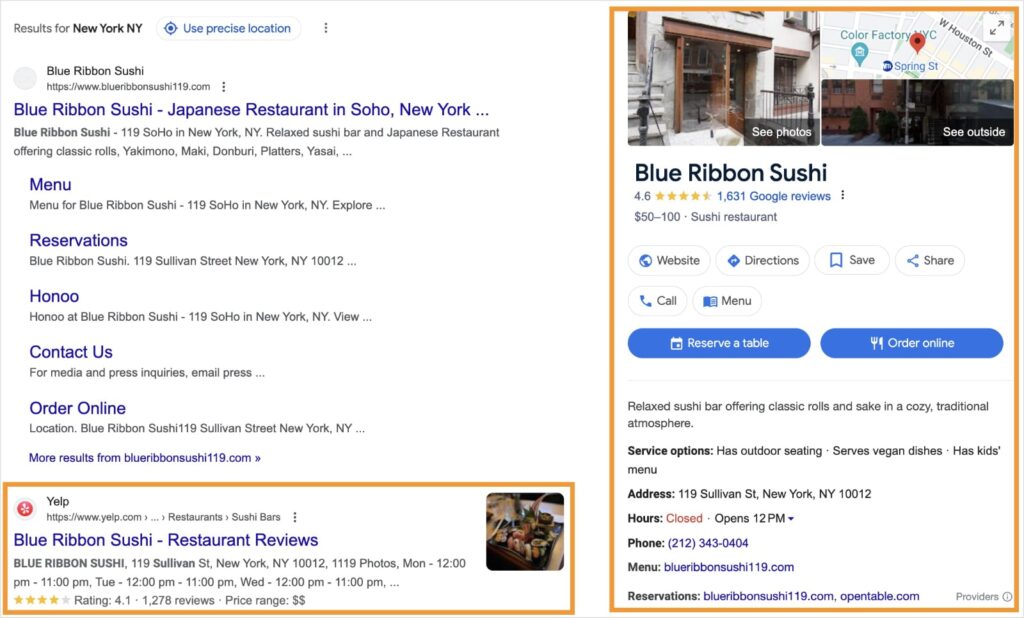
It’s also worth highlighting that Blue Ribbon Sushi’s optimizations helped it rank in the Google Local Pack.
This covetable section of the SERP groups 3 local businesses related to the user’s search query.
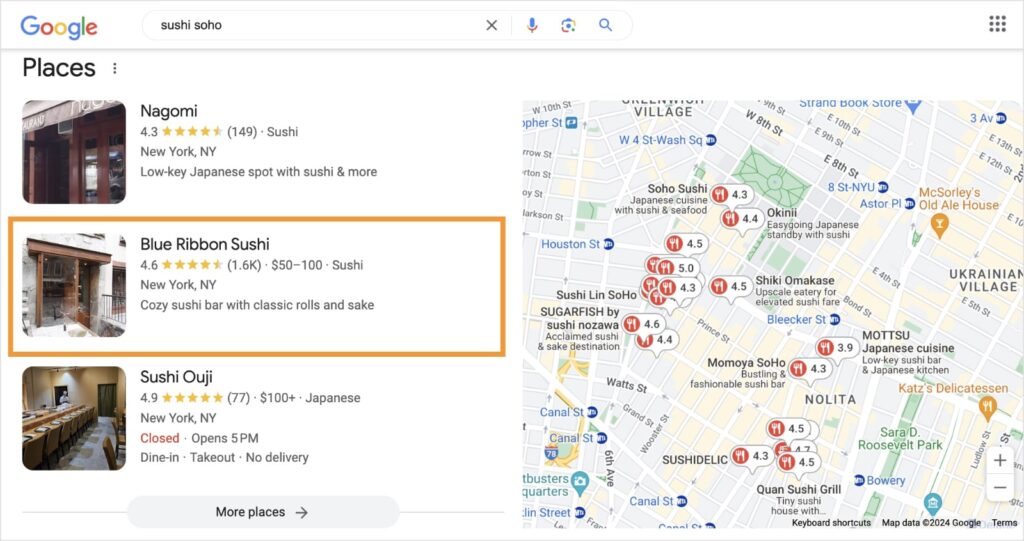
Ranking in the Local Pack brings a high level of visibility and can drive significant local traffic, making it a major SEO win for local businesses.
Now, let’s explore local search citations that aren’t created by you.
External Citations
These are mentions created by third-party sources without your direct control. Examples include:
- News articles or blog posts
- Press releases
- Review websites
- Social media platforms (where users mention your business)
- Industry-specific directories (where you do not have direct listing management)
Since anyone can create local search citations, it’s important to monitor your online presence for inaccuracies and inconsistencies.
Luckily, tools can help with this process, so you don’t have to scour the internet for mentions.
Moz has a free local listing score, and BrightLocal offers a 14-day free trial of its Citation Tracker (we’ll get more into this one shortly).
Is NAP a Ranking Factor?
Like many things related to its algorithm, Google has never confirmed NAP as a ranking factor.
With that said, NAP is widely accepted by SEO professionals as a critical component of local search success.
Consistent NAP information gives Google and other search engines confidence in your business, which can ultimately influence rankings.
NAP Listings: How to Get Your Business Listed in Directories
Claiming and optimizing your business listings in relevant directories is a straightforward process.
Here’s how to do it:
- Identify key directories. Research and identify the most popular and relevant directories for your business. This may include general directories like Yelp, as well as industry-specific directories.
- Create accurate and consistent listings. Ensure your NAP information is identical across all platforms. Include additional details such as business hours, website, categories, and a compelling business description.
- Optimize for local keywords. Incorporate relevant local keywords into your business listing to improve your chances of appearing in local search results.
- Encourage customer reviews. Positive reviews can significantly boost your local reputation and search rankings.
- Monitor and update listings. Regularly check your listings for accuracy and completeness. Make necessary updates as your business information changes.
Tools for NAP & Local SEO
Managing NAP consistency across numerous online platforms can be time-consuming and overwhelming.
Fortunately, various tools can streamline the process.
Local Citation Building and Management
BrightLocal’s Citation Builder makes it easy to get your NAP details listed in online directories.
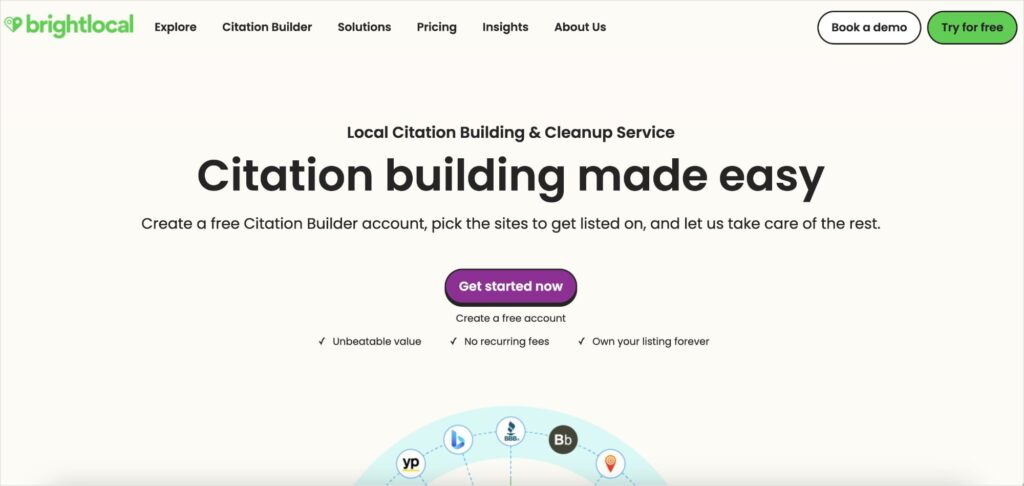
They boast a quick 3-step process:
- Sign up for a free account.
- Add your business information.
- Select the listings you want to create, fix, or manage.
BrightLocal has a 14-day free trial and various pricing plans to accommodate your business goals and budget.
WordPress Local SEO
All in One SEO (AIOSEO) is a leading SEO plugin that offers robust local SEO features. Its user-friendly form is quick to fill out with NAP details and allows you to add multiple locations.
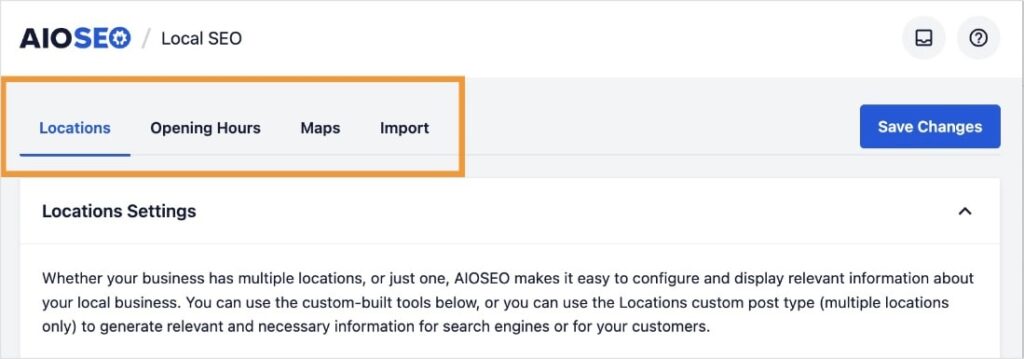
The plugin will also add local schema markup to your site, another critical component of a strong local SEO strategy.
Currently, AIOSEO has over 3 million active users, making it one of the most popular SEO plugins on the market.
As for pricing, AIOSEO offers a free lite version, but you’ll need to upgrade to a Plus plan or higher to access the local SEO features.
LowFruits: Your Secret Weapon to Local SEO
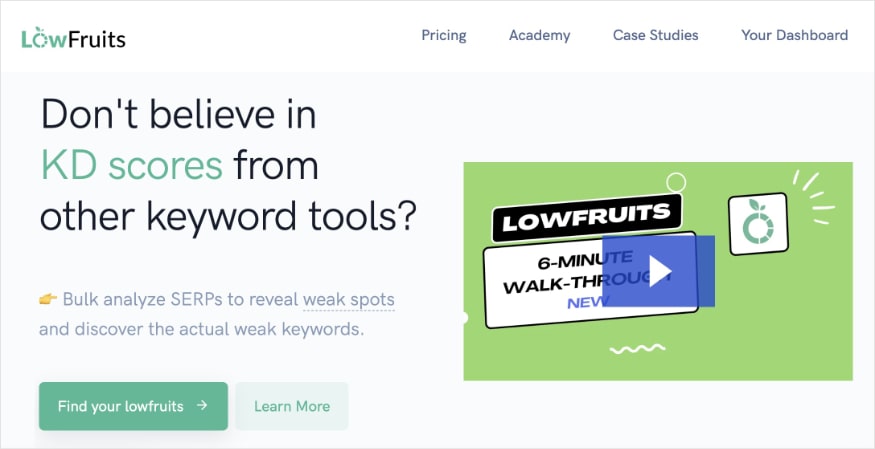
LowFruits is a game-changing keyword research and SERP analysis tool. While its primary focus might not be NAP, it can support your local SEO strategy by helping you identify low-competition keywords.
Take the KWFinder, for example.
If I had a floral shop in Los Angeles, I may perform keyword research for the term “los angeles florist.”
KWFinder would generate report that gives me related keywords to my search and quantifies how many “weak spots” are on the SERP.
Weak spots represent competitors with low domain authority. (The more, the better!)
This means they’re easy to outrank.
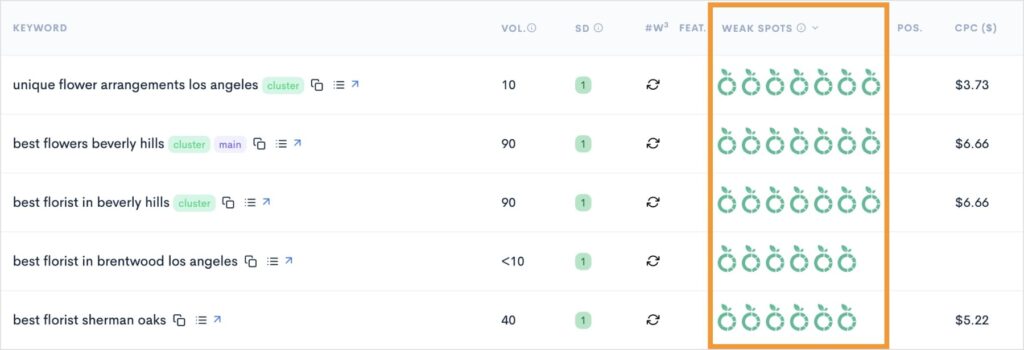
I now have a list of keywords that I could optimize and rank for to increase my visibility in LA-based searches.
LowFruits also comes equipped with a Rank Tracker, making it easy to keep an eye on your local search performance.
Rank Tracker is super easy to set up. Just tell it which keywords you want it to track, where you’re located, and how often you want it to fetch rankings.
The tool will then automatically generate a keyword ranking report based on your selections.
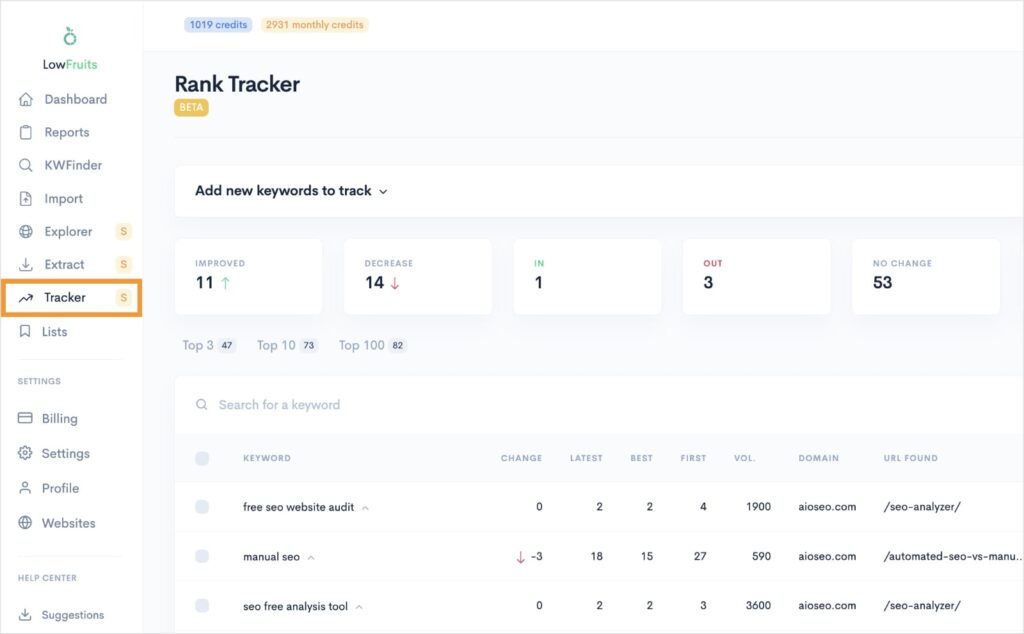
Local businesses can save valuable time with this feature because it eliminates manual rank tracking. (If you’ve ever done this old-school style with a spreadsheet, you know what I mean.)
Plus, it makes it really easy to spot when important keywords start to slip or gain traction.
It’s an effective and beginner-friendly way to measure your local SEO efforts and see what works or needs improvement.
As for pricing, LowFruits offers a pay-as-you-go (PAYG) credit system or subscriptions. You can visit the LowFruits pricing page to learn more about each plan and sign up for 10 free credits.
Final Thoughts
NAP, or Name, Address, and Phone number, is a fundamental component of local SEO.
And its accuracy and consistency are non-negotiable.
Remember, NAP is more than just data; it’s critical to building trust with search engines and potential customers.
It’s also important to consider how NAP is one component of a larger local SEO strategy.
To achieve optimal results, combine NAP optimization with other growth strategies, such as content creation, on-page SEO, and link building.
This approach will enhance your overall online visibility and drive growth for your business.
Here are a few resources to get you started: